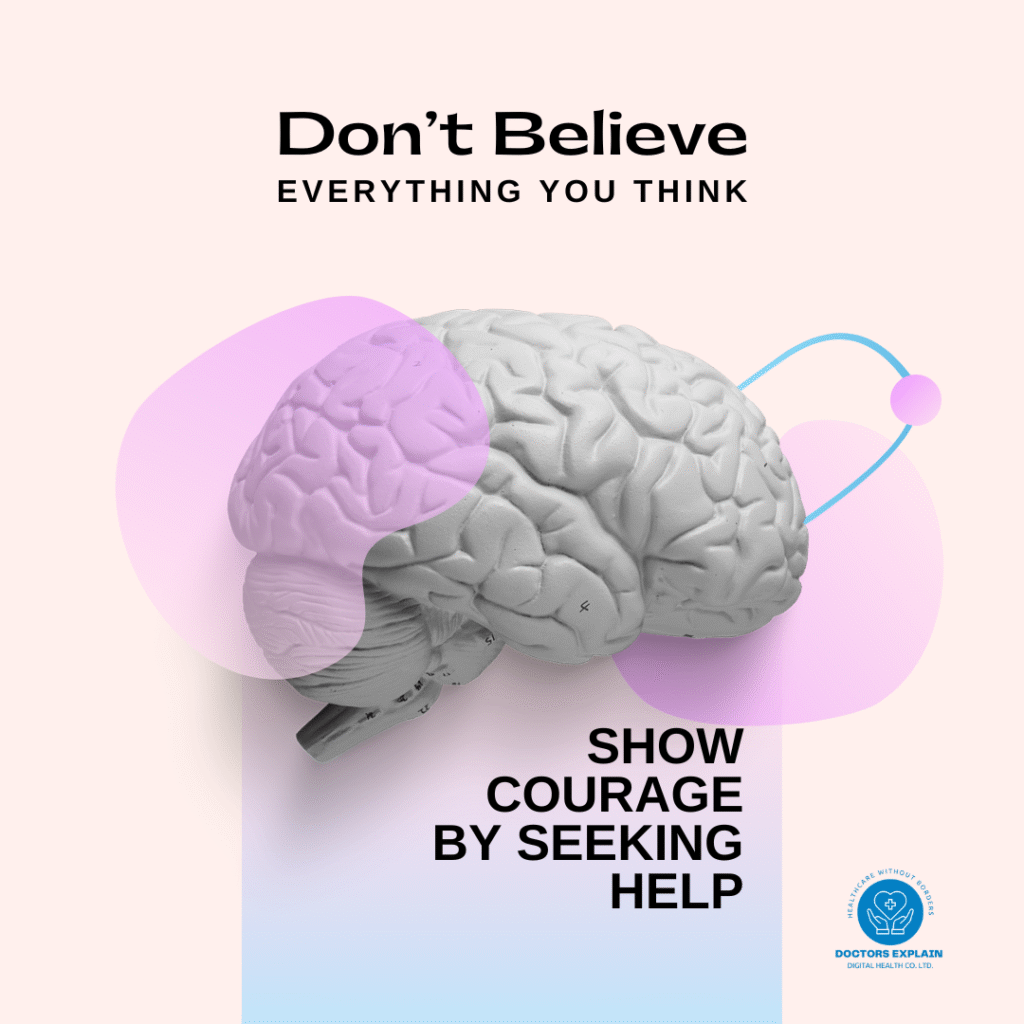
Bipolar Disorder Is Treatable: Understanding Risk Factors, Signs & Management
- June 13, 2025
- 1 Like
- 393 Views
- 0 Comments
Abstract
Bipolar disorder is a chronic psychiatric condition that affects millions globally, characterized by alternating episodes of mania and depression. Despite its severity, it is treatable and manageable through early identification, evidence-based interventions, and ongoing support. This paper reviews global epidemiological data, identifies key risk factors and early warning signs, and highlights multidisciplinary management approaches, including pharmacotherapy, psychotherapy, lifestyle adjustments, and community-based support. Increased awareness, de-stigmatization, and improved access to mental health services are essential for better outcomes.
1. Introduction
Bipolar disorder (BD), previously known as manic-depressive illness, is a major mental health condition that causes unusual shifts in mood, energy, and activity levels. Affecting an estimated 40–60 million people globally (World Health Organization [WHO], 2022), the disorder typically emerges in late adolescence or early adulthood and has significant personal, social, and economic implications. Despite common misconceptions, bipolar disorder is not a life sentence of dysfunction. With timely diagnosis and effective management, individuals with BD can lead stable, productive lives.
2. Understanding Bipolar Disorder
Bipolar disorder is categorized into several types:
- Bipolar I disorder: Characterized by one or more manic episodes, with or without depressive episodes.
- Bipolar II disorder: Defined by recurrent depressive episodes and at least one hypomanic episode.
- Cyclothymic disorder: Involves chronic fluctuations between mild depressive and hypomanic symptoms.
The exact cause of BD remains unknown, but a combination of genetic, biochemical, psychological, and environmental factors is thought to contribute to its onset (Grande et al., 2016).

3. Risk Factors
Several factors increase the risk of developing bipolar disorder:
- Genetic predisposition: A strong familial component exists; first-degree relatives have a higher likelihood of developing BD (Craddock & Sklar, 2013).
- Neurobiological differences: Abnormalities in brain structure and neurotransmitter function, particularly involving dopamine and serotonin, are implicated.
- Psychosocial stressors: Trauma, abuse, major life changes, or substance misuse can trigger episodes.
- Comorbid conditions: Anxiety disorders, ADHD, and substance use disorders are common in BD patients.
4. Early Warning Signs
Recognizing early signs can prompt timely intervention:
Manic or hypomanic episode signs
- Elevated or irritable mood
- Increased energy and activity
- Decreased need for sleep
- Rapid speech and racing thoughts
- Risk-taking behaviors (e.g., excessive spending, sexual activity)
Depressive episode signs
- Persistent sadness or hopelessness
- Loss of interest in activities
- Fatigue and slowed movement
- Difficulty concentrating
- Suicidal thoughts or behaviors
Early intervention significantly improves long-term outcomes (Post et al., 2010).
5. Management Strategies
5.1 Pharmacological Treatment
Mood stabilizers like lithium, anticonvulsants (e.g., valproate, lamotrigine), and atypical antipsychotics (e.g., quetiapine, olanzapine) are foundational (Yatham et al., 2018). Medications are individualized based on the type and phase of the disorder. Adherence is crucial, as discontinuation often leads to relapse.
5.2 Psychotherapy
Cognitive behavioral therapy (CBT), interpersonal and social rhythm therapy (IPSRT), and family-focused therapy have demonstrated efficacy in relapse prevention and symptom management (Miklowitz, 2014). Therapy also addresses medication adherence and lifestyle stability.
5.3 Lifestyle and Self-Management
- Regular sleep and activity schedules help regulate mood.
- Avoidance of substance use is critical.
- Digital mood tracking apps can support self-awareness.
- Psychoeducation empowers patients and families.
5.4 Community and Global Mental Health Interventions
In resource-limited settings, task-sharing approaches (e.g., training community health workers) and mobile health technologies show promise for expanding access to care (Patel et al., 2018).
6. Challenges in Global Management
Despite treatment advances, many people—especially in low- and middle-income countries (LMICs)—lack access to mental health care due to stigma, shortage of professionals, and inadequate infrastructure (WHO, 2022). Integrating mental health into primary care, scaling up digital interventions, and promoting mental health literacy are vital steps forward.
7. Conclusion
Bipolar disorder, though complex, is both treatable and manageable. Improved awareness of risk factors and early signs, combined with holistic and sustained care approaches, can lead to significant recovery and quality of life for those affected. Prioritizing mental health on the global agenda and investing in scalable solutions are essential for reducing the burden of bipolar disorder.
References
Craddock, N., & Sklar, P. (2013). Genetics of bipolar disorder. The Lancet, 381(9878), 1654–1662. https://doi.org/10.1016/S0140-6736(13)60855-7
Grande, I., Berk, M., Birmaher, B., & Vieta, E. (2016). Bipolar disorder. The Lancet, 387(10027), 1561–1572. https://doi.org/10.1016/S0140-6736(15)00241-X
Miklowitz, D. J. (2014). The role of family-focused therapy in bipolar disorder. Dialogues in Clinical Neuroscience, 16(2), 203–212. https://doi.org/10.31887/DCNS.2014.16.2/dmiklowitz
Patel, V., Saxena, S., Lund, C., Thornicroft, G., Baingana, F., Bolton, P., … & Unützer, J. (2018). The Lancet Commission on global mental health and sustainable development. The Lancet, 392(10157), 1553–1598. https://doi.org/10.1016/S0140-6736(18)31612-X
Post, R. M., Leverich, G. S., Kupka, R. W., Keck Jr, P. E., McElroy, S. L., Altshuler, L. L., … & Nolen, W. A. (2010). Early-onset bipolar disorder and treatment delay are risk factors for poor outcome in adulthood. Journal of Clinical Psychiatry, 71(7), 864–872. https://doi.org/10.4088/JCP.08m04990gry
World Health Organization. (2022). Mental disorders. https://www.who.int/news-room/fact-sheets/detail/mental-disorders
Yatham, L. N., Kennedy, S. H., Parikh, S. V., Schaffer, A., Beaulieu, S., Alda, M., … & Canadian Network for Mood and Anxiety Treatments (CANMAT). (2018). Canadian Network for Mood and Anxiety Treatments (CANMAT) and International Society for Bipolar Disorders (ISBD) 2018 guidelines for the management of patients with bipolar disorder. Bipolar Disorders, 20(2), 97–170. https://doi.org/10.1111/bdi.12609



Leave Your Comment